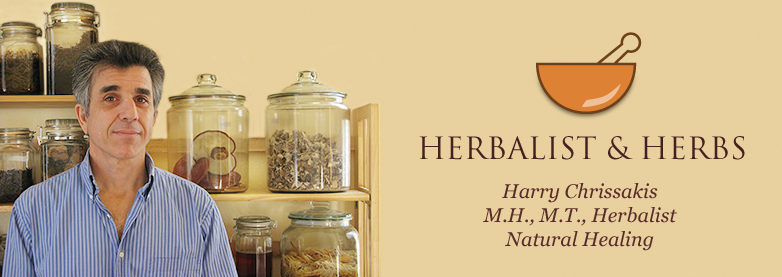by Harry Chrissakis, Herbalist, M.T. M.H. Natural Medicine
One of the major targets in modern oncology is the attempt to focus on cancers ability and need to grow vascular structures (angiogenesis) in order to feed itself and grow. Once the cancer has reached about a million cells collectively (this is equal to one millimeter, which is the size of the head of a pin) its need for more sugar and oxygen initiates the process of angiogenesis. Under normal circumstances angiogenesis is reserved for wound healing and is tightly regulated by our body. Under the condition of normal wound healing, the process of apoptosis (programmed cell suicide) is suspended and cell proliferation is encouraged. This allows new tissue to be built and the wound to heal. Once the wound has reached a certain stage in the healing process, apoptosis is reestablished and cellular proliferation is slowed down or stopped
Under the pathological influence of cancer all the rules change. Cancer captures and manipulates this process of wound healing to its advantage. The immune system is fooled into thinking that the cancer is a wound that is healing and therefore will not attack the cancer. One of the problems with cancer cells is not just the fact that cancer cells can multiply rapidly (many normal cell systems do also) but that the cancer cells do not die. Through the manipulation of the wound healing process cancer gets a win-win. Cells do not die (because cell death process is suspended), cellular multiplication is up-regulated because the cancer fools the immune system into thinking it is a wound. The cancer is able to maintain the wound healing process at this stage and suspends the normal conclusion of the wound healing process, so that cancer cells do not die and continue with unregulated growth. This is added to the fact that the aim of the angiogenesis process in cancer is to increase blood supply of glucose and oxygen to the cancer cells by constructing more veins to feed itself. This process is critical to the survival and proliferation of cancer.
A major problem with contemporary oncology is its fascination with starting at the top.. The cancer is often attacked at its strongest point, where it has the most capacity to resist. What about removing or reducing cancers infrastructure first? Some of the targeted drugs do just this but in a very limited way. That is, they focus on one particular area or growth factor and do the job well. Problem is they miss all the rest and often have their own down sides. Angiogenesis and actually any process we are going after has a lot of machinery to go with it. Much, if not all of it must be engaged and normalized. That means not only the target, but all things up or down stream from it that are its main supporting elements.
Normalizing and removing the infrastructure the cancer has built up removes multiple possibilities that the cancer relies on. Often, with cancer, if you block one way it finds another and the more pathways that are left at its disposal the more options it has. An in depth study of that cancer in that person is necessary to know what’s what in order to develop the protocol necessary for a successful outcome. In doing so we reduce its options and make its life much more difficult. A lot more testing is necessary in order to get that information. If this were done first, many failures could be avoided and there is the real possibility that less drug could be used with much greater effect. Many of the cancer processes I am referring to are also major players in developing and maintaining a cancer’s multi drug resistance. So in effect removing cancers infrastructure is also reducing or eliminating multi drug resistance. This one principle is gigantic in the treatment of chronic and or life threatening disorders. Clean up the mess first, strengthen the core, normalize aberrations, and then give them the drugs (if they still need them) along with Natural Medicine.
So how to challenge cancer’s game in the area of angiogenesis?
First, blood testing for angiogenesis factors. This should be done before anything is given, including herbs and supplements. Specificity and efficiency is what is needed. Educated guessing is still not enough. Setting base line, giving protocol and then retesting to check results. How else are we going to know if a protocol is working?
Copper (ceruloplasmin), VEGF, BfGf, ILL 1, ILL 6, ILL 8, TNFa, D-Dimer, Fibrinogen, UPA1, MMP 2, 3, and 9. All of these factors need to be tested for and can be normalized through the use of Natural Medicine. If still needed after this, than use the targeted drugs. If the cancer is very aggressive, than the use of drugs and Natural medicine from the get go.
There are multiple botanicals and multiple supplements that can effect these areas in a very positive way. Of course diet and lifestyle, in general, plays a large role as well. To go into specifics as to how to approach these areas and exactly what to use, would constitute an article in itself. What is much more important are the principles of approach and understanding that cancer is a thinking, adversarial, systemic disorder.
Harry Chrissakis Herbalist, M.H. Natural Healing
530-933-8244 • HerbalistandHerbs.com
